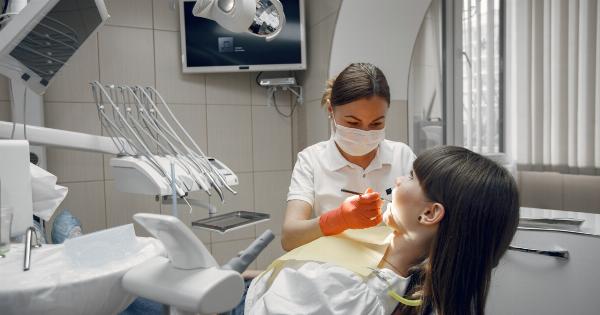Cervical cancer is one of the most common types of cancer in women worldwide. It is caused by the human papillomavirus (HPV), a sexually transmitted infection that affects both men and women.
HPV can lead to abnormal changes in the cells of the cervix, which may eventually develop into cancer if left untreated. However, early detection through HPV DNA screening can significantly reduce the risk of cervical cancer. In this article, we will explore the importance of HPV DNA screening and how it can help in protecting yourself from cervical cancer.
The Basics of HPV
HPV is a group of more than 150 related viruses, with some types causing cervical cancer. It is primarily transmitted through sexual contact, including vaginal, anal, and oral sex.
Most people who become infected with HPV do not show any symptoms and are unaware they have it. The virus can be present in the body for years before causing any health issues, making it essential to take proactive steps for early detection.
Understanding Cervical Cancer
Cervical cancer occurs when the cells in the cervix grow abnormally and invade nearby tissues. It can spread to other parts of the body, leading to life-threatening complications.
The risk factors for developing cervical cancer include smoking, having a weakened immune system, long-term use of oral contraceptives, and exposure to certain strains of HPV. Regular screening is crucial as it can detect abnormal changes in the cells of the cervix before they become cancerous.
The Importance of HPV DNA Screening
HPV DNA screening is a highly effective method to detect high-risk HPV strains that can potentially lead to cervical cancer. It involves testing a sample of cells taken from the cervix for the presence of HPV DNA.
This screening can be done in conjunction with a Pap smear, where a healthcare provider collects cells from the cervix to check for any abnormalities.
Unlike a Pap smear alone, which examines cervical cells for any changes, HPV DNA screening directly looks for the presence of the virus. This allows for early detection of high-risk HPV strains, enabling timely intervention and treatment if necessary.
It is particularly beneficial for women aged 30 and older, as they are at a higher risk of developing cervical cancer.
Who Should Get HPV DNA Screening?
HPV DNA screening is recommended for:.
- Women aged 30 and older: As mentioned earlier, women in this age group are at a higher risk of developing cervical cancer and should undergo regular screening.
- Women aged 21-29: While the risk of cervical cancer is relatively lower in this age group, HPV DNA screening may be recommended in certain cases, such as when an abnormal Pap smear is observed.
- Women with inadequate Pap smears: In some cases, a Pap smear does not provide clear results. In such situations, HPV DNA screening can be performed to further assess the presence of high-risk HPV strains.
- Women with previous abnormal screening results: If you have previously had abnormal Pap smear results or have been diagnosed with high-risk HPV strains, regular HPV DNA screening is crucial to monitor the progression and ensure timely intervention if necessary.
What to Expect during HPV DNA Screening?
HPV DNA screening is a relatively simple procedure that can be done during a routine visit to your healthcare provider. The process typically involves:.
- Discussion and counseling: Your healthcare provider will explain the procedure, address any concerns you may have and provide information about the potential outcomes.
- Sample collection: Using a small brush or swab, your healthcare provider will gently collect a sample of cells from your cervix. The sample is then sent to a laboratory for analysis.
- Laboratory analysis: The collected cells are analyzed for the presence of high-risk HPV strains. The results are usually available within a few weeks.
Based on the results of HPV DNA screening, your healthcare provider will recommend further action if necessary. In most cases, regular follow-up screenings are advised for monitoring any changes and timely intervention.
Benefits and Limitations of HPV DNA Screening
HPV DNA screening offers numerous benefits in the fight against cervical cancer:.
- Early detection: By directly detecting the presence of high-risk HPV strains, HPV DNA screening enables early intervention and treatment, significantly reducing the risk of cervical cancer.
- Increased accuracy: HPV DNA screening provides more accurate results compared to a Pap smear alone, reducing the chances of false-negative or false-positive outcomes.
- Improved patient outcomes: Detecting early changes in cervical cells allows for timely treatment, leading to better patient outcomes and increased survival rates.
However, it is important to note that HPV DNA screening has its limitations:.
- False positives: In some cases, HPV DNA screening may detect the presence of high-risk HPV strains, even when no abnormal changes are present in the cervical cells. This can lead to unnecessary anxiety and further testing.
- False negatives: While highly accurate, HPV DNA screening may occasionally fail to detect the presence of high-risk HPV strains, providing a false sense of security. Regular screenings and follow-ups are vital even with negative results.
Preventive Measures against HPV and Cervical Cancer
In addition to regular screenings, there are other steps you can take to protect yourself from HPV and cervical cancer:.
- Practice safe sex: Using condoms during sexual activity can reduce the risk of HPV transmission. However, since HPV can infect areas not covered by condoms, it does not provide complete protection.
- Get vaccinated: HPV vaccines are available to protect against the most common HPV strains that can lead to cervical cancer. It is recommended for both males and females, ideally before they engage in sexual activity.
- Quit smoking: Smoking weakens the immune system and increases the risk of developing cervical cancer. Quitting smoking can substantially reduce this risk.
- Maintain a healthy lifestyle: Eating a balanced diet, exercising regularly, and managing stress can contribute to a stronger immune system, reducing the risk of cervical cancer.
Conclusion
Getting regular HPV DNA screenings is crucial in protecting yourself from cervical cancer. By detecting high-risk HPV strains early on, it enables timely treatment and significantly reduces the risk of developing cervical cancer.
Alongside screenings, following preventive measures such as practicing safe sex, getting vaccinated, quitting smoking, and maintaining a healthy lifestyle can further decrease your chances of developing this potentially life-threatening disease. Remember, taking proactive steps and staying informed is the key to safeguarding your cervical health.


























